We get monthly "what to plant" emails from the website Gardenate.com, and throughout the summer they got a bit sad. November: Plant basils, sweet potato, rosellas. December: Plant basils, rosellas. January: Plant rosellas. We're back into more diverse planting season at the moment, but we're also in the midst of the rosella harvest.
We have 6 rosella plants in our garden, and they are a very lovely plant, I think. They are all at different stages of development, and some took a while to become productive.
After the flower opens, the petals fall off and a red bud-like calyx forms, sort of like a rose hip. This calyx is actually what you harvest. The red "petioles" around the calyx are super tart, and can be turned into jam, cordial, syrup, and those kinds of things. They are also dried and turned into tea - most famously, Celestial Seasons Red Zinger tea, but usually they are an ingredient in most commercial lemon-flavoured teas. Or if the seed pod is removed intact, they are poached and sold for an awful lot of money as "blooming" flowers to add to a glass of champagne.
We've been harvesting, slowly at first, since December. I made a tiny batch of cordial at christmastime, and I think I will do some again because it would make really nice cocktails.
But most of the harvest has gone into the freezer, waiting for a big enough batch to make jam. This is the most popular use, it seems, of rosellas, which are also known as the "Queensland Jam Plant" - which begs the question, if you refer to them as the Queensland Jam Plant, what do you call the jam? Queensland Jam Plant Jam? Queensland Jam?
Linguistic conundrums aside, two weekends ago we had a full freezer bag, plus a big bowl full of fresh calyxes to work with. Let the jam making begin! I used this blog post as my guide (but ended up using far less sugar).
Step 1: separate the red petioles from the green seed pod. I put my frozen and fresh calyxes in a big pot with water, to wash off the bugs, crusty old petals, etc.
Then I spent the next three hours (I kid you not) peeling them apart. It was a lot of work. The pre-frozen calyxes were actually much easier to separate - they peeled away in one quick move. For my next batch, I will definitely freeze them all before working with them. I will also do a better job of washing the calyxes before they go in the freezer, so I don't need to have them in a bucket of water to process. Seriously, my hands have never in my whole life been so wrinkly.
By 7pm on Saturday I had a sore back, wrinkly hands, a bowl full of seedpods and a bowl full of calyxes. I put the rosella-bits into the fridge till the next day.
Put the seed pods into a pot. Cover them with water. Bring it up to the boil, and let it go for about 20 minutes. My jam, in the end, wasn't as set as I would like. I have heard that cutting the seed pods in half is a better way to release the pectin. Probably easier would be to sort of smash them in the water as it is coming up to the boil. I'll let you know if it works better the next time around. After the seed pods have cooked, strain them off. Compost the pods, save the liquid.
Rinse the jam pot out with clean water. Add the red petioles, and the seed pod-cooking liquid. Bring them up to a boil and let them cook until the petioles have gone mushy. This didn't take too long, once the boil got rolling - maybe 5 or 10 minutes.
Turn the heat down to very low. Let the jam mix cool slightly. Add sugar. I used about 1 2/3 cups of raw sugar, in about 5 cups of jam mixture. This seems like much less than most recipes call for, which could account for the lack of proper-set. But it tasted good - still lovely and tart, but not face-squeezy. Dissolve the sugar gently into the jam while you taste to see if it needs any more.
Once the sugar is dissolved, bring it back up to a rolling boil. Let it cook like that for 30 minutes (sorry, raw foodies, you'll have to look elsewhere). Set a timer, get a book, turn on the fan in the kitchen and stir it pretty near constantly for the whole time. When the 30 minutes is up, you test for set. It's probably best that I don't give advice on this aspect, because I failed. I put my jam on a cold plate in the freezer, but found it hard to determine if it was gelly because of the rosella-bits. So I just thought, schmeh, and we bottled it up.
A lot of people talk about alternative methods for sealing jam jars - popping them upside down while they cool, putting them in the oven, etc. But I've read things that make me nervous about breaking the Preserving Rules, so we got a gigantic pot to boil our jam jars to properly seal them.
We got four jars, which all sealed properly. When I opened one and found the jam was runny instead of gel-tastic, I was a little disappointed, but then I tasted it. And it tasted really, really yummy. And, because of all the rosella chunks, it is still fine to have on toast - didn't run off!
But, what better to do with runny jam than put it into baked goods? I used the recipe for Raspberry Swirl Pound Cake from Urban Vegan, using (obviously) rosella jam in place of raspberry.
It was even more delicious with another spoonful of jam on top!
Luckily, we still have 3+ jars of jam, a freezer bag and a half of calyxes, and 6 still-productive plants, because I have falled head over heels for this stuff!
(PS - I made jam out of the hibiscus flower, not the parrot.)


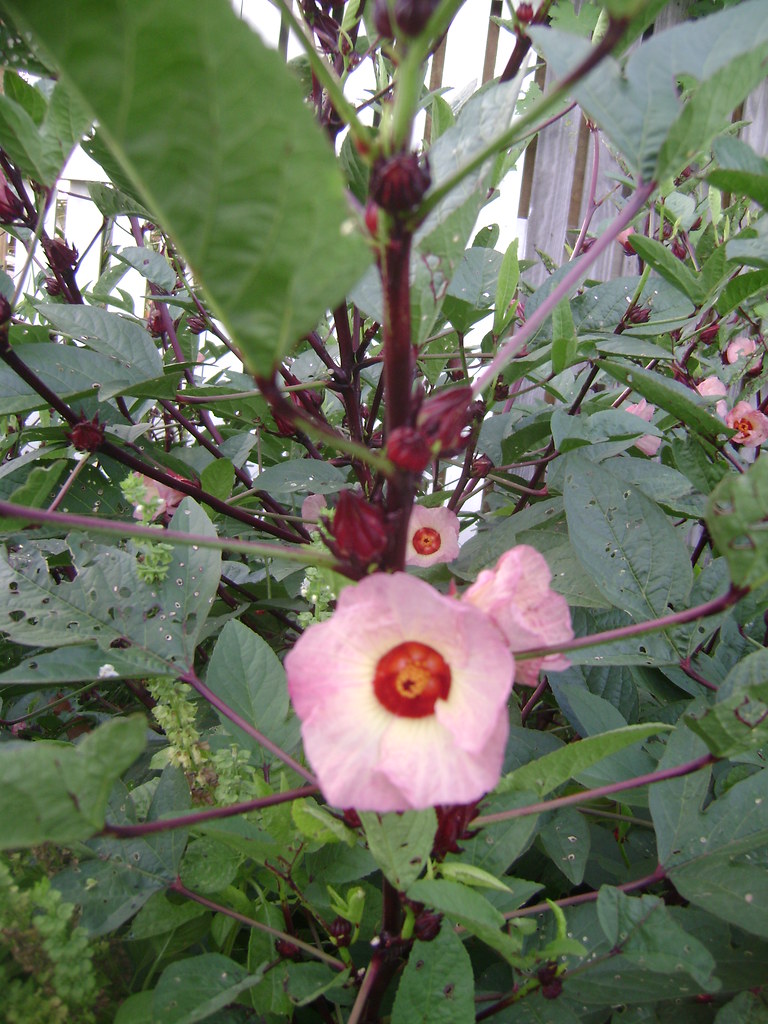
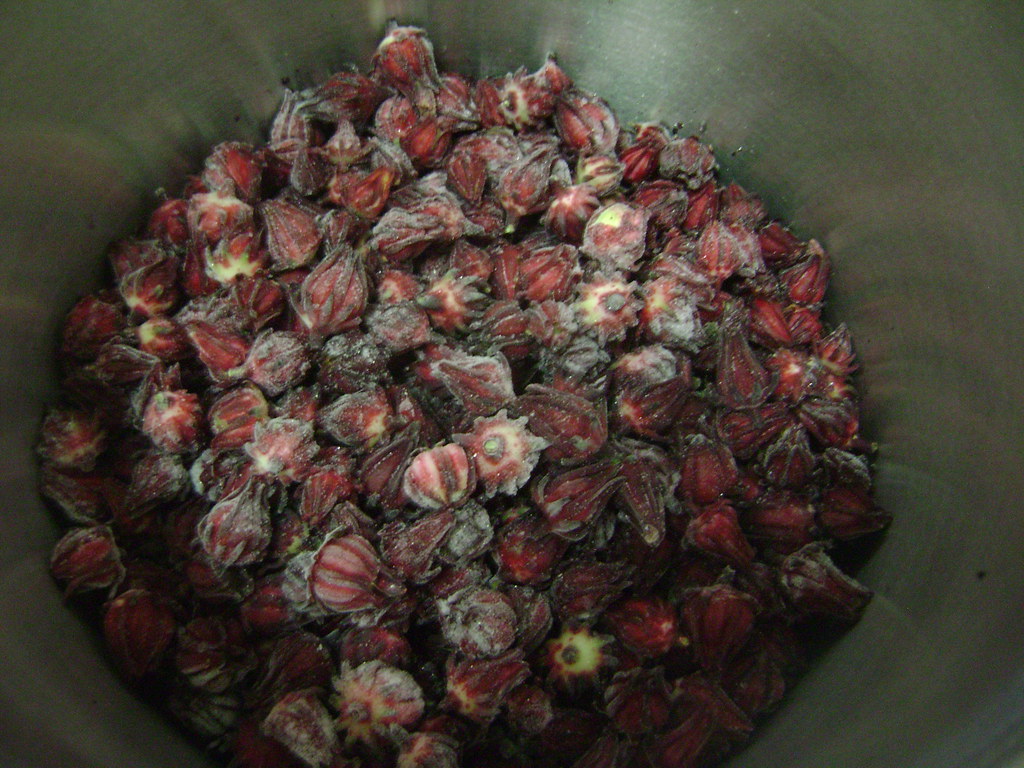
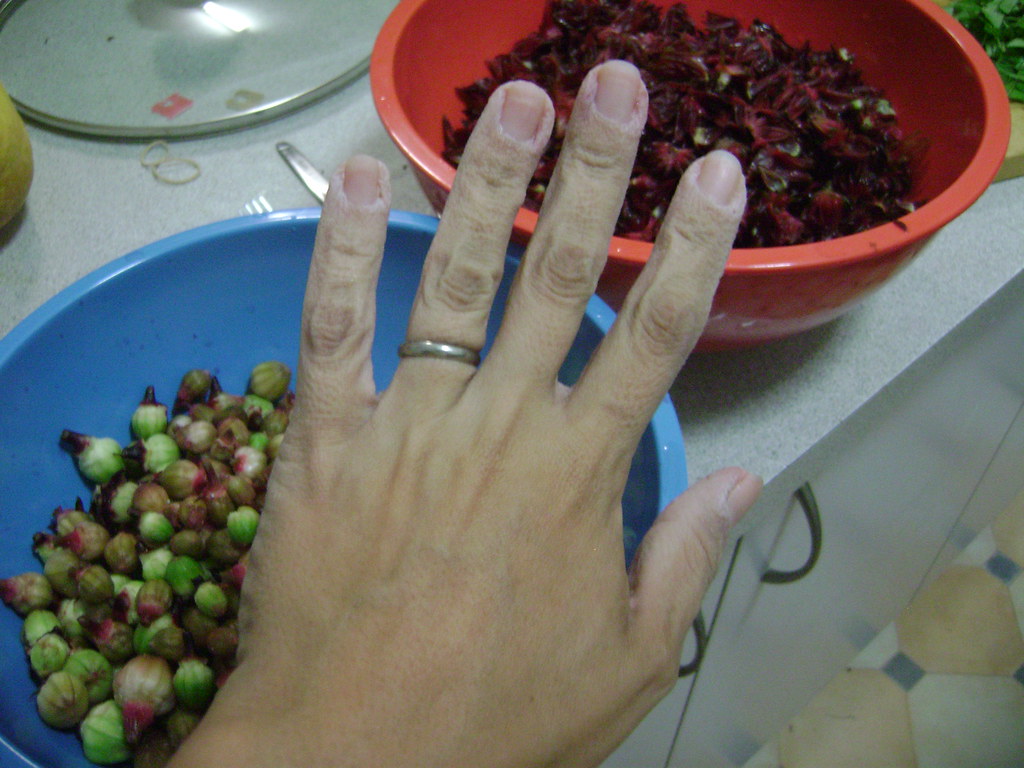
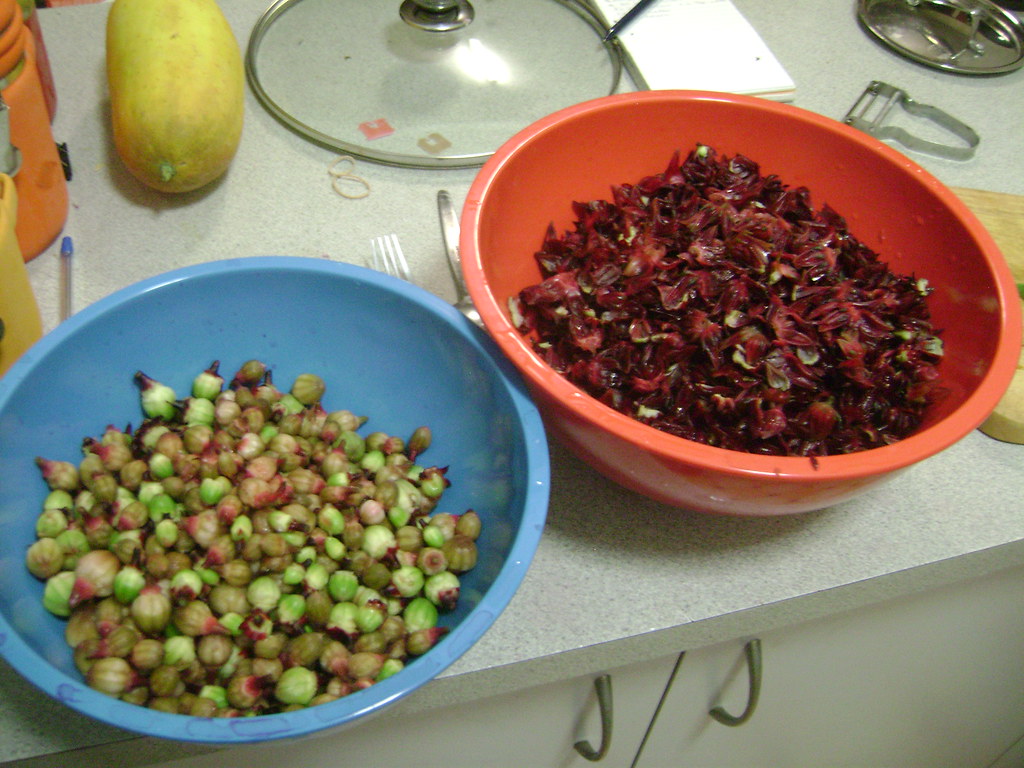
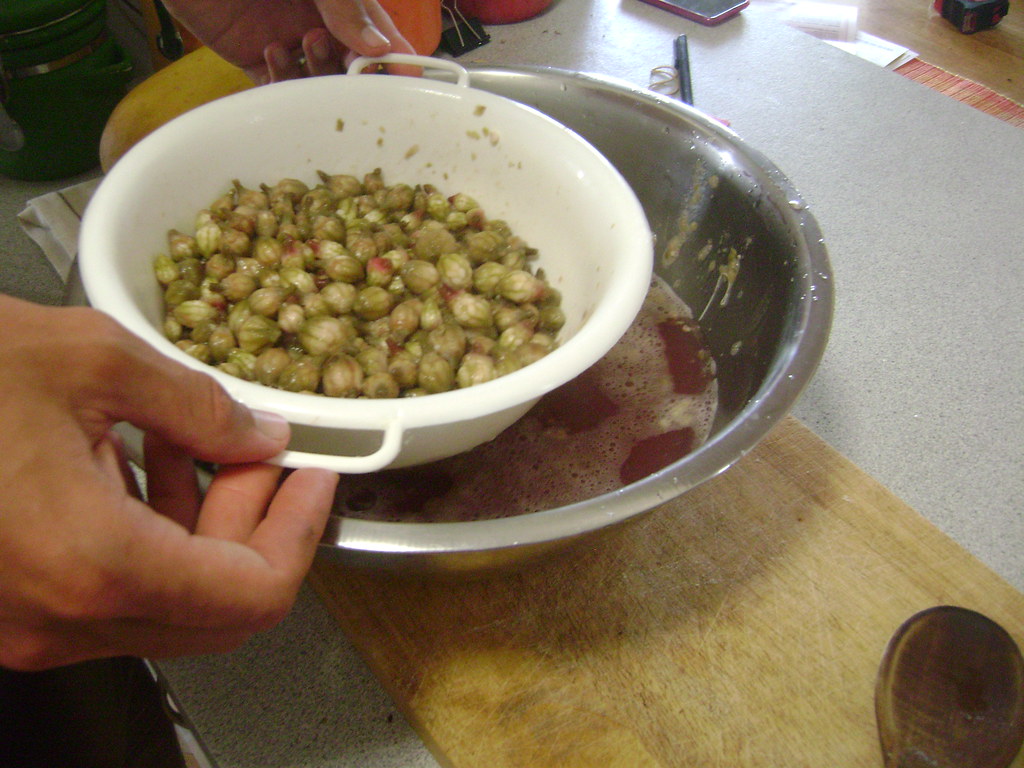
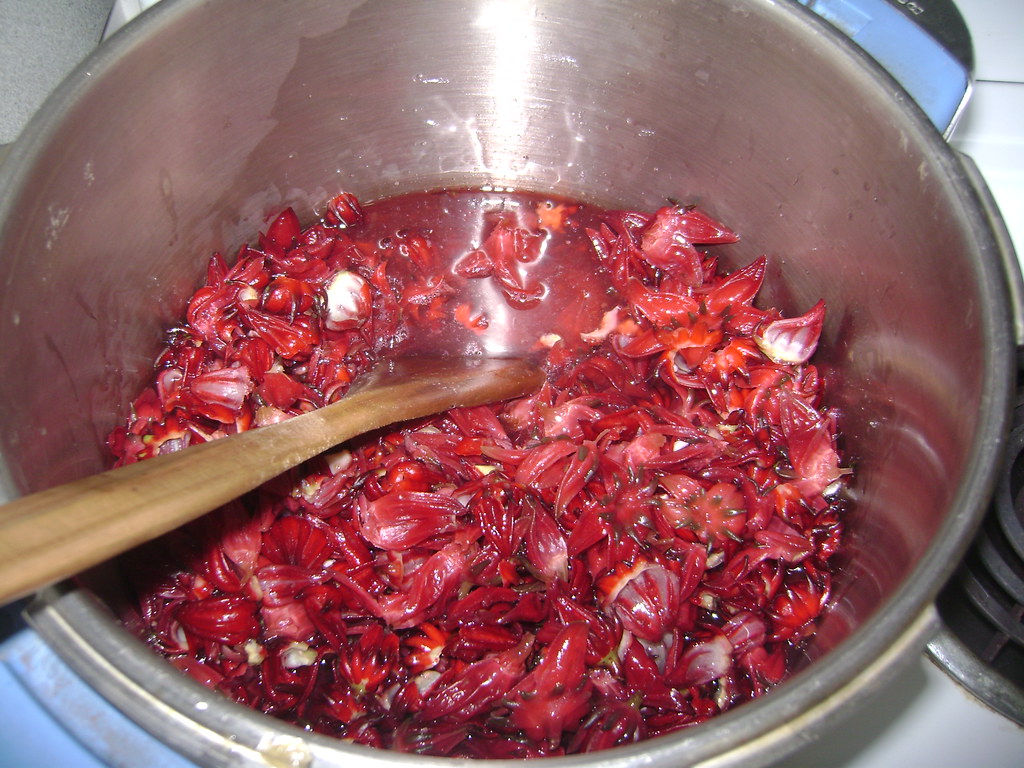

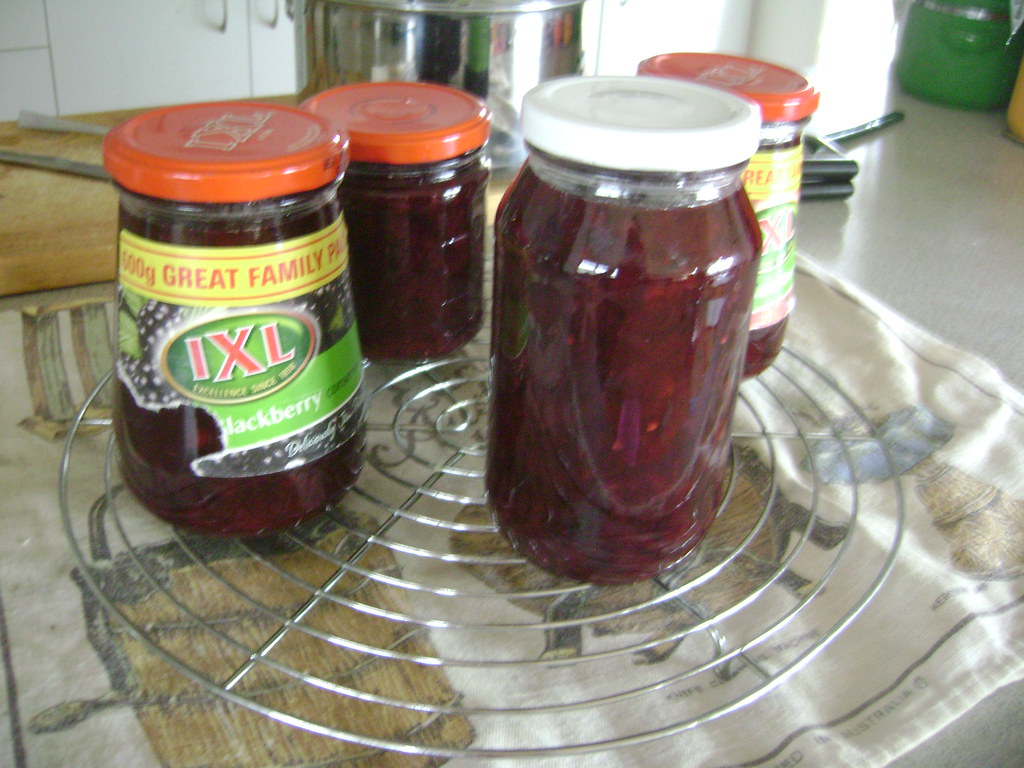

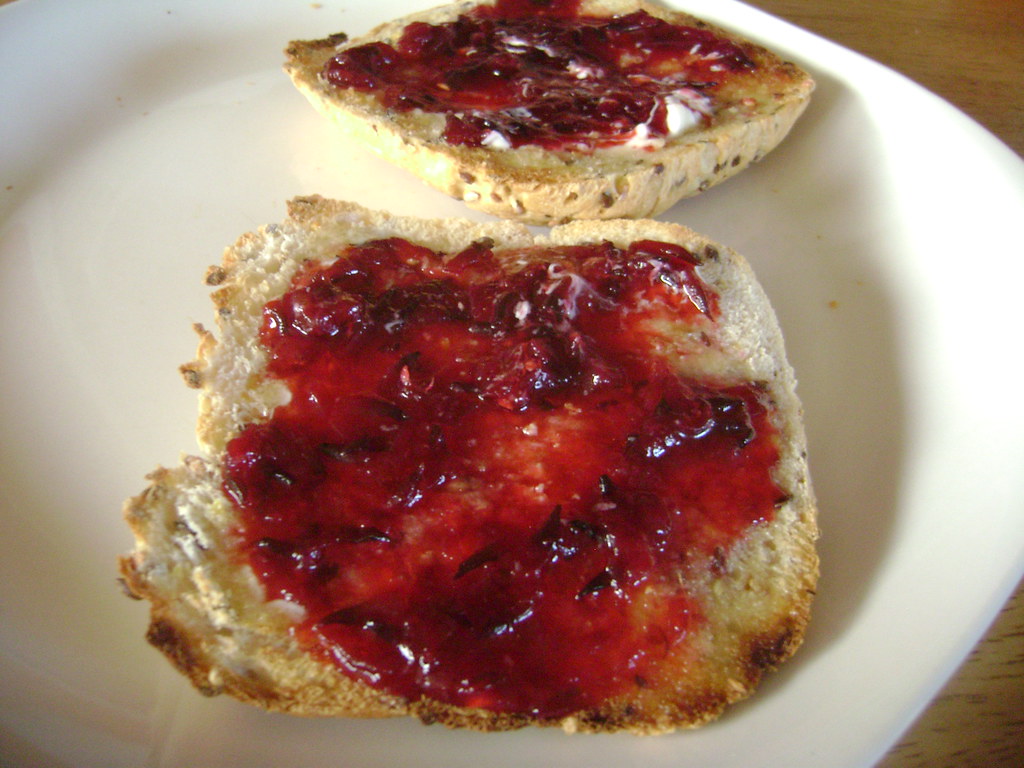


8 comments:
I know it seems insane, but jam is 1:1 sugar and fruit. You have to remember that this is a way of preserving valuable vitamins for a long winter, and failure was not an option. I have used less, but the shelf life is less.
I am ashamed to say I always used my rosellas for cut flowers (the stems of fruit) and they were much admired. Can I get some seeds if you produce any?
I am so ridiculously impressed. I've only ever had rosella flowers in syrup dropped into champagne. Which is, of course, delicious, but still. You = epic.
That picture of your hands made me giggle! What an indication of how hard you worked to get these rosella products...which are seriously impressive. The jam sounds like it would be worth spreading on all sorts of things.
You are so creative!
Thank you so much for posting so many vegan recipes...
I didn't even know you could make jam from them - always been cocktail syrup here too. The syrup was gorgeous though, but they'd make a cracking jam
Man, making your own jam out of a plant I never even heard of! That's so awesome.
Yum! I have fond memories of eating my grandmother's rosella jam, especially on pumpkin scones... definitely a Queensland thing. ;-)
Wow, what a impressive project! I'm not familiar with the Rosella plant, it certainly is attractive but I don't think I would have the patience to go through such a huge process to utilise it.
Interesting to hear that you use gardenate - I came across it the other day and loved the info about plantings by month for different temperature zones. I must sign up for those emails now...
Post a Comment